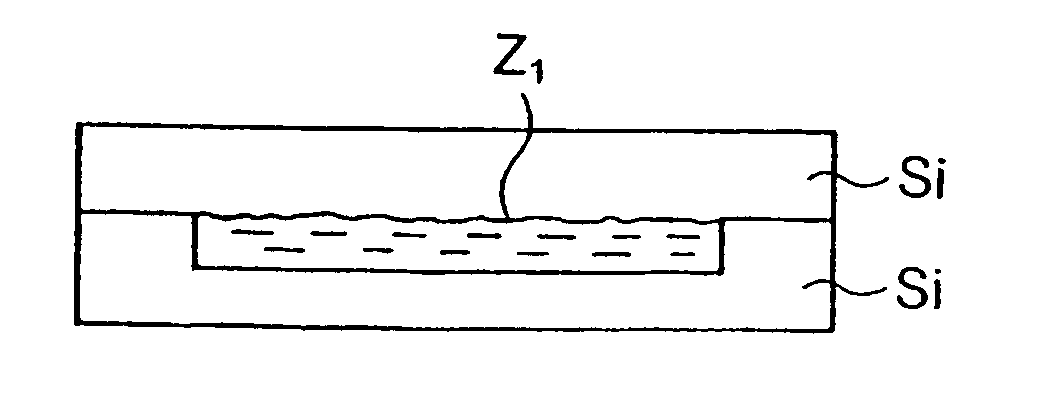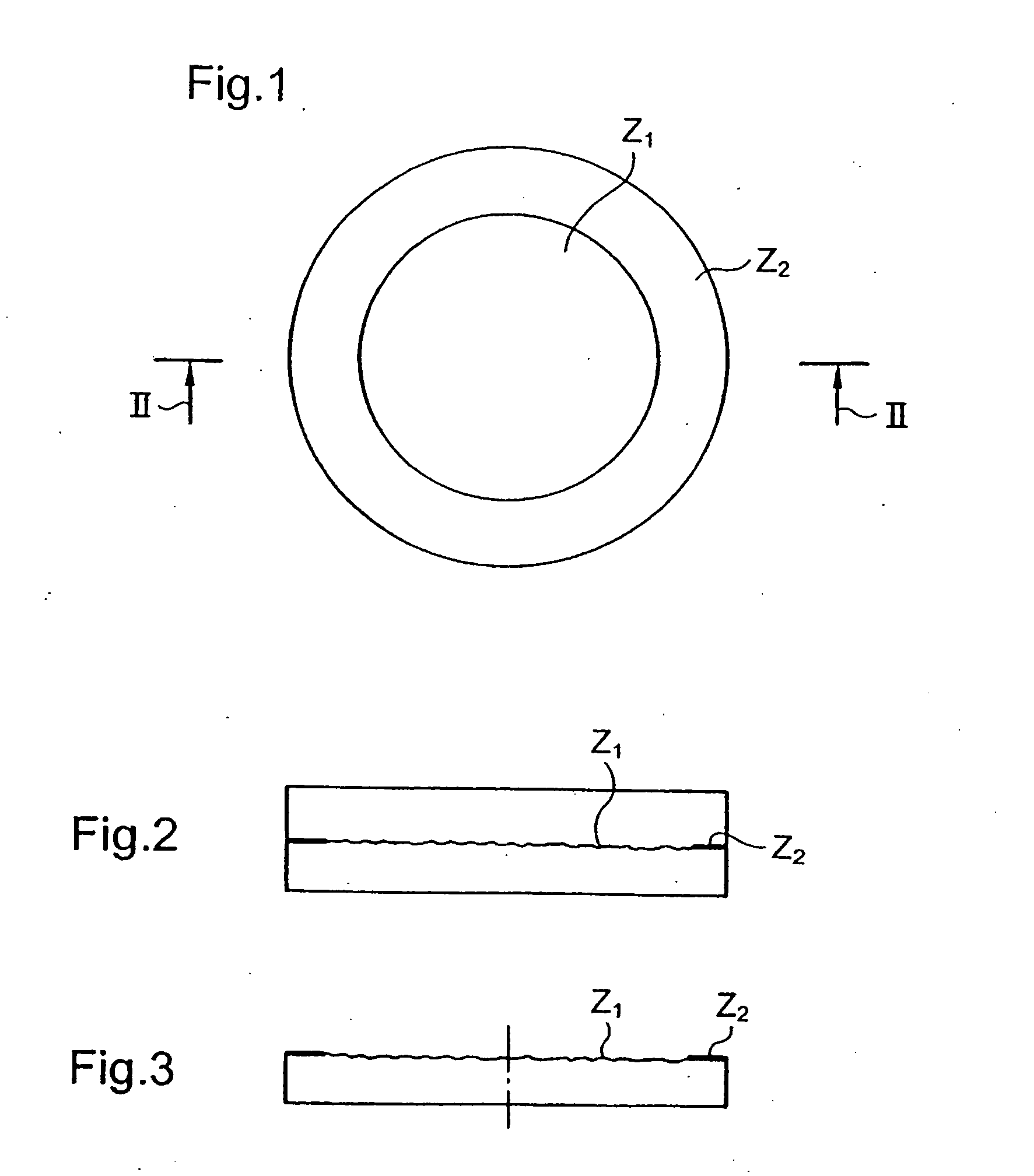Detachable substrate or detachable structure and method for the production thereof
a technology of detachable substrates and substrates, applied in the direction of lamination, decorative surface effects, decorative arts, etc., can solve the problems of excessive cost of substrates that are beneficial for the production of components, a posteriori bulky substrates used to produce epitaxial stacks, and insufficient availability of highly resistive substrates at the same cost. , to achieve the effect of reducing the risk of untimely delamination
- Summary
- Abstract
- Description
- Claims
- Application Information
AI Technical Summary
Benefits of technology
Problems solved by technology
Method used
Image
Examples
Embodiment Construction
[0118] 1—Molecular Adhesion Bonding Interface
[0119] The preferred examples selected for the detailed description primarily relate to silicon, which is generally available in the form of round substrates, for example of 200 mm diameter. These methods transfer readily to other systems characterized in particular by materials other than silicon, in a nonlimiting manner and without departing from the scope of the invention.
[0120] Some embodiments of the method according to the invention tend to encourage lifting of the layer off its substrate at the overall level, i.e. on the scale of the whole of the substrate, while others tend to delimit fragments.
[0121] An assembly to be produced in the former case is shown diagrammatically in FIGS. 1 and 2, the interface or intermediate layer shown diagrammatically in FIG. 2 representing the region in which local bonding differences are to be created. In addition to these figures, FIG. 3 in particular shows one example of the preparation of a su...
PUM
| Property | Measurement | Unit |
|---|---|---|
| size | aaaaa | aaaaa |
| size | aaaaa | aaaaa |
| thicknesses | aaaaa | aaaaa |
Abstract
Description
Claims
Application Information
 Login to View More
Login to View More - R&D
- Intellectual Property
- Life Sciences
- Materials
- Tech Scout
- Unparalleled Data Quality
- Higher Quality Content
- 60% Fewer Hallucinations
Browse by: Latest US Patents, China's latest patents, Technical Efficacy Thesaurus, Application Domain, Technology Topic, Popular Technical Reports.
© 2025 PatSnap. All rights reserved.Legal|Privacy policy|Modern Slavery Act Transparency Statement|Sitemap|About US| Contact US: help@patsnap.com



